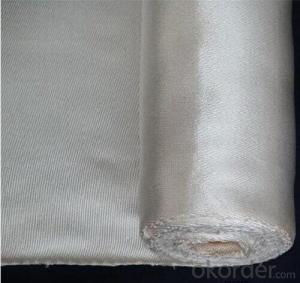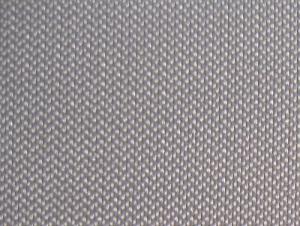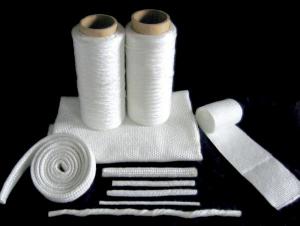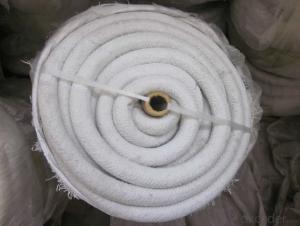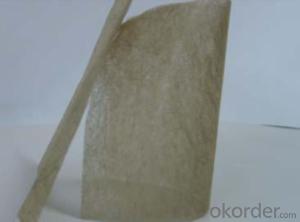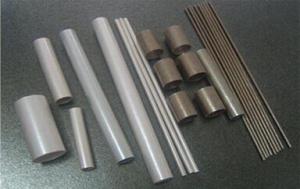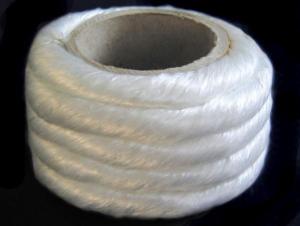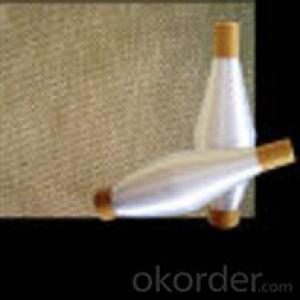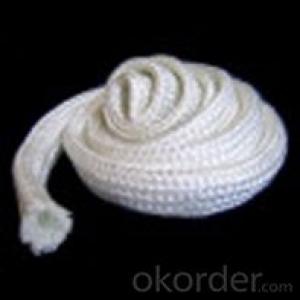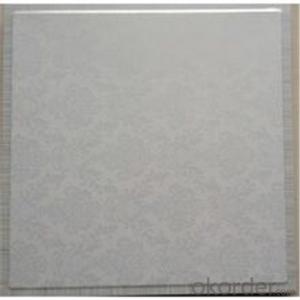Alumina Coated Glass Fiber Fabric Product
- Loading Port:
- Qingdao
- Payment Terms:
- TT OR LC
- Min Order Qty:
- 500 m²
- Supply Capability:
- 3000 m²/month
OKorder Service Pledge
OKorder Financial Service
You Might Also Like
Alumina Coated Fiberglass Fabric is made of important fiberglass as the wearing material to plain knit or specially knit into superior fiberglass basic cloth,coat it with fine PTFE resin then make it into various of Teflon high temperature resistance cloth in different thickness and width .
Besides ,having the grate capability of antisepsis and heat resistant, the surface is more smoothly and it has better non-viscidity capability. It could be used in ordinary industry field, and has better predominance on being used as plastic module separating, and separating patch, gasket, separating module of some products.
PRODUCT FEATURES AND BENEFITS*
* stable dimension, high intensity, elongation coefficient less 5%
* good temperature resistance,24 hours working temperature -70~260oC
* low coefficient of friction and dielectric constant, good insulating ability
* non-stick, easy to clear stains and adhensive on the surface
* good chemical resistance, it can resist all most of chemical medicines, acids, alkalis and salt, it is fireproof, lower in aging.
*With excellent heat resistance, rub resistance, high insulation properties, high tensile strength, oil resistance, corrosion resistance, flame resistance, non-halogen properties
Model | Thickness (mm) | Color | Width (mm) | Normal Weight (g/m²) | Tensile strength (N/cm) | Peeling strength (N/25mm) | Heat resistance (℃) |
CT - TF008 | 0.08 |
Brown *White *Black *Beige
| 1250 | 150 | 180/140 | 6.5-9.5 | -60~260 |
CT-TF013 | 0.13 | 1250 | 260 | 290/260 | 6.5-9.5 | -60~260 | |
CT-TF015 | 0.15 | 1250 | 300 | 310/260 | 6.5-9.5 | -60~260 | |
CT-TF018 | 0.18 | 1250 | 330 | 400/260 | 6.5-9.5 | -60~260 | |
CT-TF025 | 0.25 | 2800 | 450 | 550/500 | 6.5-9.5 | -60~260 | |
CT-TF035 | 0.35 | 3200 | 700 | 650/600 | 6.5-9.5 | -60~260 | |
CT-TF040 | 0.40 | 3500 | 780 | 820/500 | 6.5-9.5 | -60~260 | |
CT-TF065 | 0.65 | 4000 | 1100 | 880/730 | 6.5-9.5 | -60~260 | |
CT-TF09 | 0.9 | 4000 | 1500 | 1050/950 | 6.5-9.5 | -60~260 |
- Q:How does glass fiber textile perform in terms of moisture management?
- Glass fiber textile performs well in terms of moisture management. The inherent properties of glass fiber, such as its non-absorbent nature and hydrophobic surface, make it highly effective in wicking away moisture and keeping the user dry. Unlike natural fibers like cotton, which tend to absorb moisture and become wet, glass fiber textile repels moisture and allows it to evaporate quickly. This not only helps in maintaining a comfortable level of dryness but also prevents the growth of bacteria and odor-causing microbes. Additionally, glass fiber textile has a high breathability factor, allowing air circulation and further enhancing moisture management. Overall, glass fiber textile is an excellent choice for moisture control in various applications, such as sportswear, outdoor gear, and upholstery.
- Q:Are glass fiber textiles resistant to chemicals and solvents?
- Yes, glass fiber textiles are generally resistant to chemicals and solvents. Glass fibers are made from inorganic materials, primarily silica, which provides them with excellent resistance to a wide range of chemicals and solvents. They are not easily corroded or degraded by most chemicals, making them suitable for use in environments where exposure to such substances is common. However, it is important to note that the level of resistance can vary depending on the specific type of glass fiber textile and the nature of the chemicals or solvents involved. Therefore, it is always recommended to consult the manufacturer's specifications or perform compatibility tests to ensure the desired level of resistance for a particular application.
- Q:Can glass fiber textiles be used for reinforcement in plastic bottles?
- Indeed, plastic bottles can be reinforced with glass fiber textiles. Commonly known as fiberglass, these materials are lightweight, sturdy, and long-lasting, and are widely utilized in various industries such as automotive, aerospace, and construction. By incorporating glass fiber textiles into plastic bottles, their structural integrity is enhanced, minimizing the risk of deformation or breakage. The glass fibers contribute strength and stiffness to the plastic matrix, thereby increasing the bottles' resistance to impact, pressure, and temperature fluctuations. Moreover, the use of glass fiber reinforcement can reduce the amount of plastic needed in the bottle's production, presenting a more sustainable alternative. However, it is important to acknowledge that the addition of glass fibers may slightly affect the bottle's transparency, resulting in a slight opacity. Consequently, if transparency is crucial, alternative reinforcement materials like carbon fiber or aramid fibers may be preferred.
- Q:Can glass fiber textiles be used for reinforcement in fiberglass boats?
- Yes, glass fiber textiles can be used for reinforcement in fiberglass boats. In fact, they are commonly used in the construction of fiberglass boats due to their high strength-to-weight ratio and excellent resistance to corrosion and moisture. Glass fiber textiles are typically woven or knitted into fabric or mat forms, which are then impregnated with a resin, such as polyester or epoxy, to create a composite material. This composite material, known as fiberglass, provides structural integrity and enhances the overall strength and durability of the boat. The textiles can be applied to various parts of the boat, including the hull, deck, and interior, to reinforce specific areas and improve the boat's performance and longevity.
- Q:Can glass fiber textiles be used as insulation?
- Yes, glass fiber textiles can be used as insulation. Glass fiber textiles are made from glass fibers that are woven together to create a fabric-like material. This material has excellent thermal insulation properties, making it suitable for use in insulation applications. Glass fiber textiles are commonly used in buildings, homes, and industrial settings to insulate walls, roofs, pipes, and other surfaces. They can effectively trap air and reduce heat transfer, helping to maintain comfortable indoor temperatures and reduce energy consumption. Additionally, glass fiber textiles are resistant to fire, moisture, and pests, making them a durable and long-lasting insulation option.
- Q:Can glass fiber textile be used in wind turbine blades?
- Yes, glass fiber textile can be used in wind turbine blades. Glass fiber is a common material used in the manufacturing of wind turbine blades due to its high strength and lightweight properties. The glass fibers are typically woven into a textile form and then impregnated with resin to create a composite material. This composite material offers excellent tensile strength, stiffness, and fatigue resistance, making it suitable for withstanding the dynamic loads experienced by wind turbine blades. Additionally, glass fiber textiles can be easily shaped and molded into complex blade designs, allowing for optimal aerodynamic performance. Overall, glass fiber textile is a widely used and effective material choice for wind turbine blades.
- Q:Can glass fiber textiles be used in the production of window blinds?
- Glass fiber textiles have the ability to be utilized in the manufacturing of window blinds. Renowned for their durability, strength, and ability to resist heat and moisture, glass fiber textiles are well-suited for window blinds. They possess the capability to endure various environmental conditions and retain their shape and integrity over time. Moreover, glass fiber textiles offer insulation and protection against harmful UV rays, which can be advantageous when used in window blinds. Incorporating glass fiber textiles in window blinds can also enhance privacy and control over the amount of light entering a room. All in all, due to their multiple advantageous qualities, glass fiber textiles present a viable choice for producing window blinds.
- Q:How do glass fiber textiles resist mildew?
- Due to their inherent properties, glass fiber textiles exhibit resistance against mildew. Unlike organic materials such as cotton or wool, glass fibers are inorganic and lack the necessary elements to support the growth of mold or mildew. Furthermore, they do not have any nutrients that can provide sustenance to microorganisms. In addition, glass fibers have the ability to repel moisture, which is crucial in preventing the formation of mildew. The smooth surface of glass fibers also poses a challenge for mold spores to attach and flourish. Moreover, manufacturers often apply anti-microbial agents to glass fiber textiles during production to enhance their resistance to mildew. These agents act as a barrier, impeding the growth of mold and mildew, thereby ensuring the durability and hygienic qualities of the textile. In conclusion, the combination of an inorganic composition, moisture resistance, smooth surface, and anti-microbial treatment renders glass fiber textiles highly resilient against mildew.
- Q:What is the cost of glass fiber textiles compared to other materials?
- The cost of glass fiber textiles is generally lower compared to other materials such as carbon fiber or Kevlar. However, it can vary depending on the specific application and quality of the material.
- Q:Can glass fiber textiles be used in reinforcement of natural fibers?
- Yes, glass fiber textiles can be used in the reinforcement of natural fibers. When combined with natural fibers such as cotton or hemp, glass fibers can enhance the strength and durability of the composite material. The glass fibers act as a reinforcement, providing increased tensile strength and resistance to wear and tear. This combination of natural and glass fibers is commonly used in applications such as automotive parts, construction materials, and sporting goods.
1. Manufacturer Overview |
|
|---|---|
| Location | |
| Year Established | |
| Annual Output Value | |
| Main Markets | |
| Company Certifications | |
2. Manufacturer Certificates |
|
|---|---|
| a) Certification Name | |
| Range | |
| Reference | |
| Validity Period | |
3. Manufacturer Capability |
|
|---|---|
| a)Trade Capacity | |
| Nearest Port | |
| Export Percentage | |
| No.of Employees in Trade Department | |
| Language Spoken: | |
| b)Factory Information | |
| Factory Size: | |
| No. of Production Lines | |
| Contract Manufacturing | |
| Product Price Range | |
Send your message to us
Alumina Coated Glass Fiber Fabric Product
- Loading Port:
- Qingdao
- Payment Terms:
- TT OR LC
- Min Order Qty:
- 500 m²
- Supply Capability:
- 3000 m²/month
OKorder Service Pledge
OKorder Financial Service
Similar products
New products
Hot products
Related keywords
